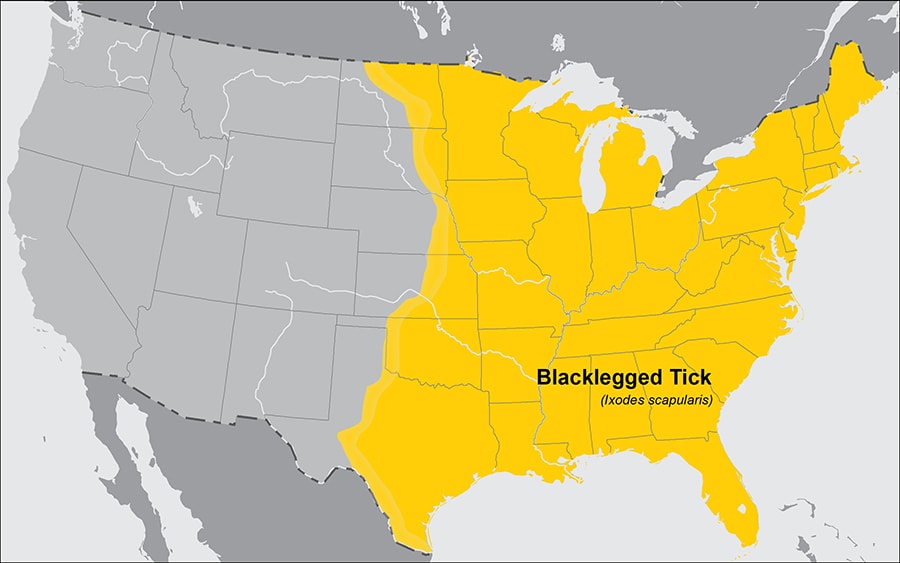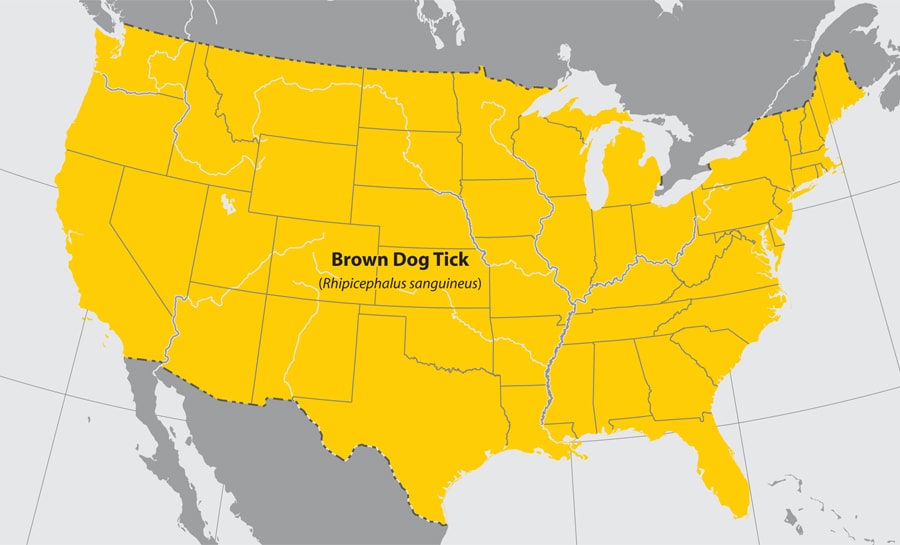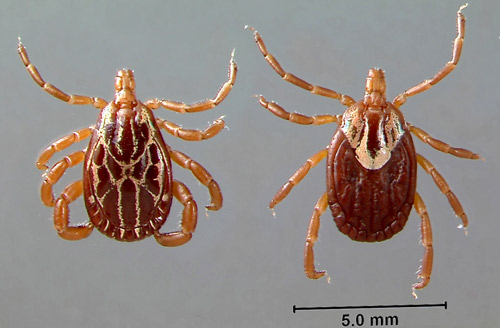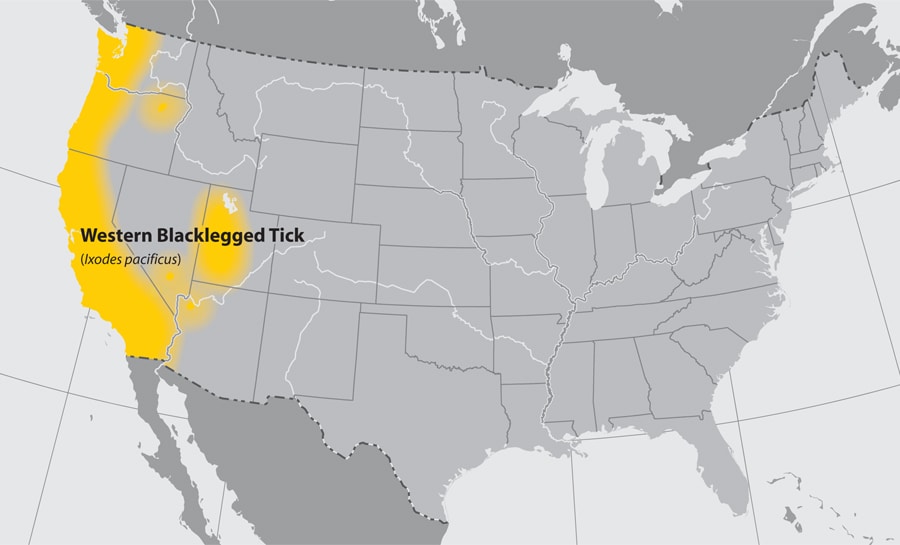Ticks are disgusting little parasitic creatures that want nothing more for you to come along so they can hitch a ride, burrow into your warm and juicy flesh, and suck your blood until they’re about to pop.
Unless you’re a female carrying a baby human, I’m quite confident you don’t want a parasite taking your precious blood from you.
Ticks suck – not just because they literally suck your blood, but because they also carry and transmit diseases. Yep, these little parasites also play host to other parasites in the form of bacteria that infect them in hopes of infecting you.
Here’s a list of many diseases and infections you can get from ticks:
- Anaplasmosis
- Babesiosis
- Borrelia mayonii
- Borrelia miyamotoi
- Bourbon virus
- Colorado tick fever
- Crimean-Congo hemorrhagic fever
- Ehrlichiosis
- Heartland virus
- Imported tickborne spotted fevers
- Kyasanur forest disease
- Lyme disease
- Omsk Hemorrhagic Fever (OHF)
- Powassan disease
- Rickettsia parkeri rickettsiosis
- Rocky Mountain spotted fever (RMSF)
- STARI (Southern tick-associated rash illness)
- Tickborne encephalitis (TBE) virus
- Tickborne relapsing fever (TBRF)
- Tularemia
- 364D rickettsiosis
So now that you’re likely Dr. Googling yourself and thinking you have six fatal tickborne diseases, let’s discuss what you can do to recognize and prevent tick bites and prevent any of these nasty diseases.
Where do ticks live?
Generally speaking, ticks can be found in vegetated underbrush and forested areas all around the globe. They are most active (meaning engaged in trying to bite you) in spring and early summer here in North America.
Are you scared to get a tick now? You should be. They’re nasty buggers. Let’s discuss how to avoid getting a tick next.
How to avoid tick bites
Now that you know all the terrible diseases ticks can spread, let’s learn how to avoid getting bit by a tick in the first place.
Use Insect repellant
The first method of defense when entering tick habitat is to always use DEET or permethrin insect repellant – or both.
Every few months, I like to spray all my adventure and hiking clothes with permethrin insect spray. This stuff works wonders and lasts for up to six washes. Be sure to spray the cuffs collars and things like socks where ticks often land really well.
After the permethrin spray, I still like to apply a DEET bug spray to my skin and vulnerable spots when entering tick habitat. This makes you very unapealling to the little buggers as well as to mosquitos.
Cover up vulnerable areas
Another strategy is to ensure vulnerable areas like your lower legs and arms are covered. This means wearing long sleeves and long pants. You can get lightweight, breathable, shirts and pants so you don’t get too hot. You can also get pants that have a drawstring around the ankles to cinch down and make it harder for the ticks to access your skin.
I also like to wear longer socks and when bushwacking, I’ve even tucked my pant hems into my socks to keep the beasties at bay. I don’t normally wear gloves when just hiking, but you could wear gloves for more protection.
Pay attention
Ticks find you by perching themselves out on the end of a leaf, grass blade, or stick and waiting for an innocent host to pass by. This is called “questing”.

(Alex Wild Photography)
Ticks are also known to be attracted by the CO2 we exhale and will gravitate toward it.
To avoid ticks, avoid brushing against foliage and rocks along the trail. Ticks won’t be able to hitch a ride on you if you don’t touch them, so simply pay attention to what you’re touching.
Inspect for ticks
I’m a tick magnet. Pretty much any time I go out into tick habitat during spring, I end up plucking ticks off my skin. As I walk through vegetation, I’m always paying attention to any little itch or tickle. I usually find ticks on my ankles and hands before they get anywhere harder to notice them. I’m also pretty hairy so they have to navigate through the hair on my arms and legs which helps me notice them.

Not only should you be inspecting yourself as you’re on the trail, but you also need a thorough inspection when you get home and undress. Ticks often like to find dark and warm places to burrow into so be sure to inspect all those parts carefully.
You can use a mirror, but a partner is the best way to get to places like your scalp and back.
What to do if you get bit by a tick
Most of the time I catch them before they can burrow in, but occasionally, I find a sneaky vampire that gets past my defenses while I’m on the trail.
If you find a tick that’s made it past your security, you’ll need to remove it ASAP. The longer a tick is embedded in your skin, the higher the risk of it transmitting disease into you.
You don’t need any fancy tools or chemicals to get a tick out beyond what you should have in your first aid kit – the one you pack with you all the time – right? Tweezers and an alcohol wipe will do the job. Soap and water is preferred if you have that, but often that’s not an option in the field.
How to remove a tick
To remove a tick that’s embedded in your skin is a simple task. Here’s a (horrible) video of me removing a tick from my son’s belly button of all places:
The steps are straightforward:
- Using clean tweezers, grasp the tick as close to your skin as you can.
- Gently pull the tick until it releases.
- Wipe the bite area with an alcohol wipe or wash it with soap and water.
- Take a photo of the tick for medical identification purposes.
- Monitor yourself for any symptoms of illness and report to a physician if you notice any.
To wrap it up, keep ticks at bay with insect repellant, pay attention to any hitchhikers, and get them off as soon as possible.

















